How to Use an Extension Ladder Safely: 10 Simple Tips
-
Jeff Weishaupt
- Last updated:

A ladder is an essential piece of equipment in most households, industries, and working spaces. Unfortunately, as unreal as it may sound, ladders are also a major cause of injuries worldwide. In 2020 alone, the BLS1 reported 161 fatalities and 22,710 ladder-related injuries.
Ladder-related injuries can occur anywhere, anytime. To prevent them in workplaces, companies must ensure proper implementation of OSHA ladder safety guidelines. Similarly, you must also follow them in your household.
However, things aren’t as tricky as they seem—you can easily use an extension ladder safely with the following tips:
The 10 Simple Tips on How to Use an Extension Ladder Safely
1. Starting by Knowing the Extension Ladder
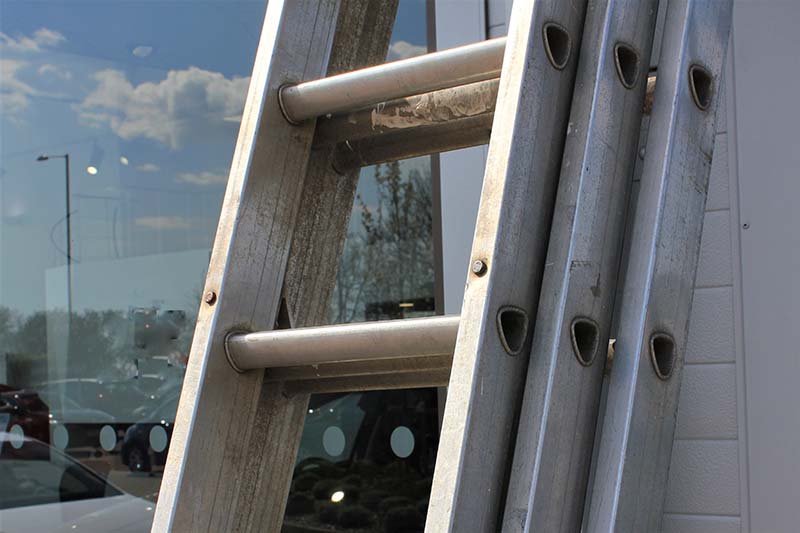
It’s important to know the parts of the extension ladder1 to use it safely and correctly. You may already know about the two primary components of an extension ladder—the base and the fly section. But that’s not it; you should know a few more elements.
Here is a brief overview of some of them:
- The Safety Shoe or Foot. It is the part that stays in contact with the floor when you’re using the ladder. The safety shoe consists of multiple pads, which rotate slightly to keep the ladder stable on different surfaces.
- The Fly Section. It is the part that goes upward, on which you climb to get to the top of the ladder. While most extension ladders have a one-part fly, some may have a two-part fly, making up for a total of three primary components.
- The Base Section. It is the part that remains in place whether the ladder is in use or not. So, when climbing the ladder, you’ll start from the rungs present on the base section.
- The Rung Lock. This component comes with the fly section to keep it in place. The rung lock acts as a bracket and is fitted on the top of the base or fly rung from underneath. If the rung lock is fitted on the top of the fly’s rung, you may not be able to slide down the fly section after putting weight on it.
- The Rope and Pulley. Both these elements extend the length of the extension ladders. The rope and pulley are essential components of every large ladder, which is why you don’t find them in smaller ladders. If they are broken, an extension ladder is of no use.
2. Know Why Extension Ladders Are Dangerous to Avoid Injuries
Injuries due to falls and trips from ladders are pretty common in households and industries alike. Extension ladders, especially, have a higher rate of causing injuries because of their massive lengths. That is why they are considered dangerous and only recommended to be used by an expert.
However, you can prevent most of these injuries by understanding what causes them. Here are two things that make an extension ladder dangerous:
- Extension ladders only have two contact points with the surface of the ground. This is because they have two feet or shoes on each side of the rails. On the other hand, smaller ladders usually offer four contact points with the ground when folded out. This makes extension ladders less stable.
- Extension ladders are one of the largest ladders available right now. Although their height contributes significantly to causing accidents, it primarily intensifies their already existing instability problems. This makes the extension ladder nothing different than a lever—your weight is shifted to the end of the lever as you climb the ladder.
Both these major causes of extension ladder accidents can be prevented if you use the ladder correctly. Here are a few things to keep in mind:
- Never climb an extension ladder solely. Instead, ask for help from someone and ask them to hold the foot of the ladder in place while you climb it.
- Don’t use the extension ladder on a vertical or near-vertical angle. Instead, always tilt or lean it on strong support when climbing it. It will minimize the weight-shifting issue discussed above.
3. Estimate the Weight Your Ladder Can Bear
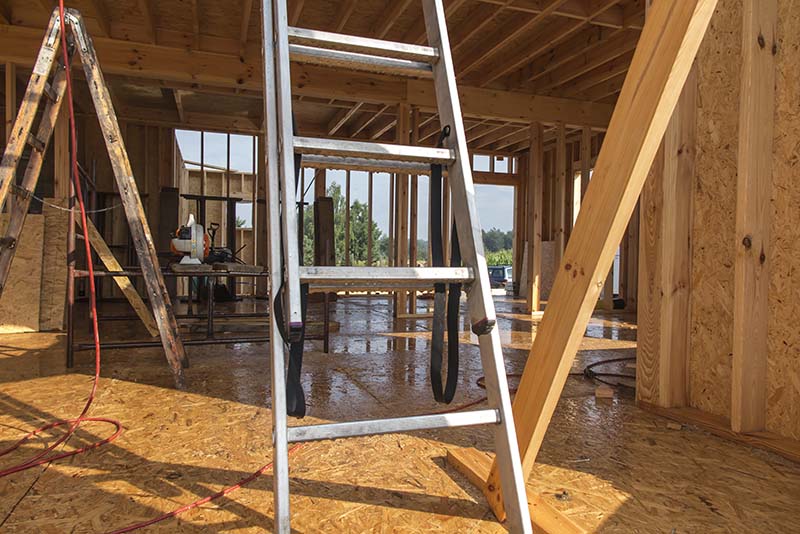
Every ladder has a specific weight limit it can bear. So, you must estimate the weight your extension ladder can handle before climbing on it.
When understanding the weight capacity of your ladder, you may come across many complicated terminologies related to ladder classification systems. However, if you’re a beginner, you don’t have to confuse yourself with them.
Instead, search your ladder or its package to find how much weight it can handle. Remember to stay within this limit.
4. Always Inspect the Ladder Before Using
No matter how urgent the task is, never climb an extension ladder without inspecting it. Any minor or severe damage to the ladder’s pulley, rung lock, or rungs can make it dangerous, resulting in falls and trips. To prevent an uncalled trip to the hospital, look over the ladder carefully and ensure that it’s safe to use.
5. Ensure the Ladder Is Locked in Place
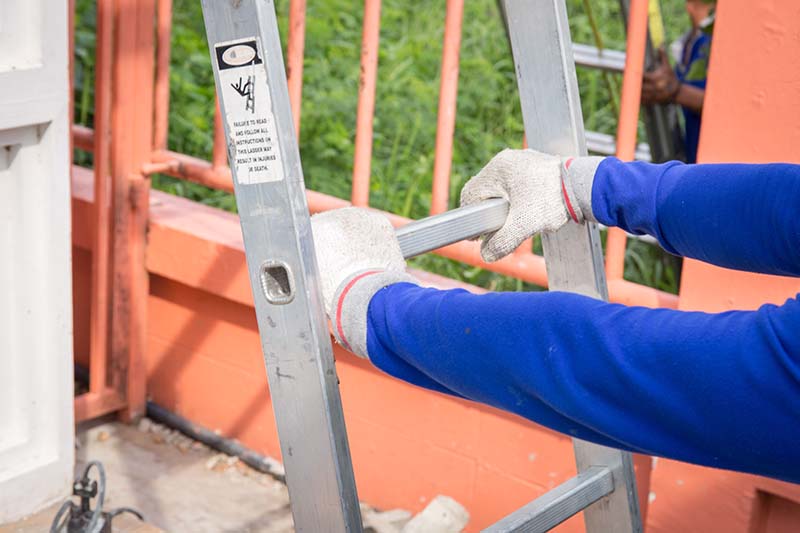
Before climbing an extension ladder, try to move it a little from its place. If it moves, it isn’t locked from the rung lock or any other safety feature.
Even worse, you may get your fingers caught between the fly and the base, or in some cases, between the rungs of both these sections. As a result, your hands and fingers can be severely broken or pinched.
6. Position the Ladder Correctly
Always position the ladder correctly before extending it. Move it to the place you want to reach a height from and set it down on its foot or shoe. As a rule of thumb, the fly must be on the base’s top, meaning it should extend higher and on the outer climbable side.
To attain the best climbing angle, ensure that the base of your extension ladder is ¼ of its height away from the wall. This means if your ladder’s working height is 12 feet, its base must be 3 feet away from the wall or any other structure.
7. Raise the Fly if the Ladder Doesn’t Have a Pulley
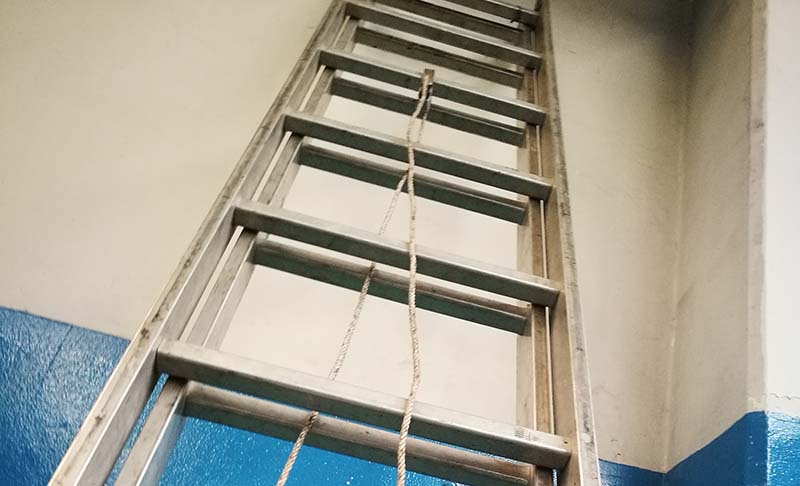
Most extension ladders have a pulley and rope for easy positioning. If your ladder works on a pulley, you can extend it by pulling on the rope. However, if it doesn’t have the pulley and rope, you can raise the fly manually for perfect positioning.
However, you must keep a few things in mind while doing so. First, ensure that the ladder’s base remains footed as you raise it. This means one person must hold both rails of the ladder’s base firmly.
Second, if you’re using the ladder on a roof, you must extend the ladder to more than 3 feet above the working height. Lastly, avoid using the extension ladder in windy conditions, but if you have to, observe preventive measures.
8. Ensure the Fly Lock Is Aligned With the Rung Locks
If you fear that your extension ladder’s fly will slide closed in between, you must ensure its lock is in place with the rung locks. This is an additional precautionary measure to observe to climb the ladder safely.
9. Maintain a Good Contact of the Ladder With the Structure
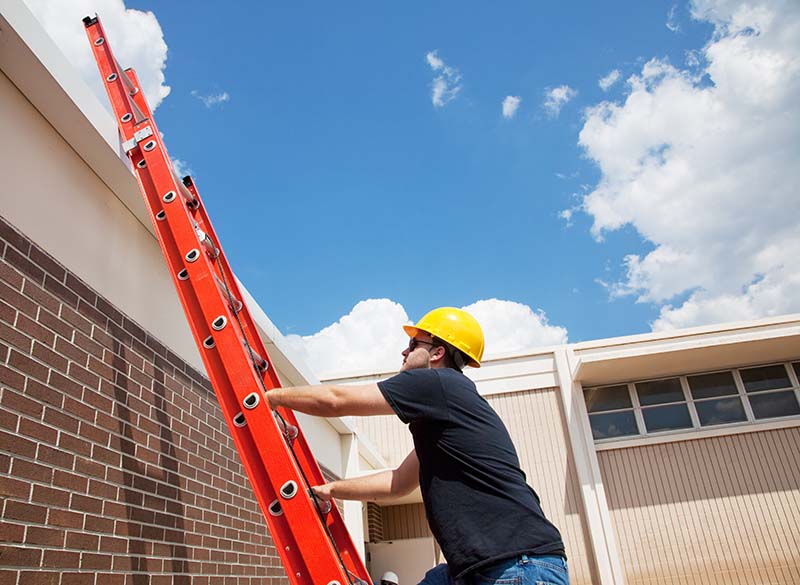
Another important tip to follow when climbing the ladder is to footing it continuously to prevent its base from kicking out. Ensure that both sides of your extension ladder maintain good contact with the structure it’s leaned on.
If any side of the ladder isn’t in contact with the structure, it may result in sudden trips or falls. So before climbing the ladder, ensure it’s perfectly leaned on.
10. Climb the Ladder Carefully
Finally, start climbing the ladder carefully. Make sure to do so one rung at a time while maintaining a strong hold on both sides of the ladder. Also, center your body in the middle of the rails and don’t lean on one side to prevent the ladder from tripping over.
Remember to avoid carrying any item in your hands when climbing. Instead, wear a tool belt around your waist to carry small tools. Also, climb with your face toward the ladder.
You should also secure the ladder perfectly in place. When fully extending the ladder, use a bungee cord or tie down for firm placement. Wrap it around the ladder’s top to secure it to the structure it’s leaned on.
You can attach a cushion or pillow to the ladder’s arms when leaning the ladder on a wall or building. This will prevent scratches on the structure.
Conclusion
An extension ladder is a practical tool for all repair or maintenance work. It has a significant height, making it helpful for reaching all types of structures.
However, you must inspect the ladder for any faults before using it. You should also understand the core components of an extension ladder to use it the right way.
Additionally, you must also know why these ladders are difficult to use. With that, estimate the weight your ladder can hold and how to place it perfectly. Following these tips will help you prevent many falls and injuries.
- Related Read: How Does a Pulley Work? The Surprising Answer!
Featured Image Credit: Bjoern Wylezich, Shutterstock
Contents
